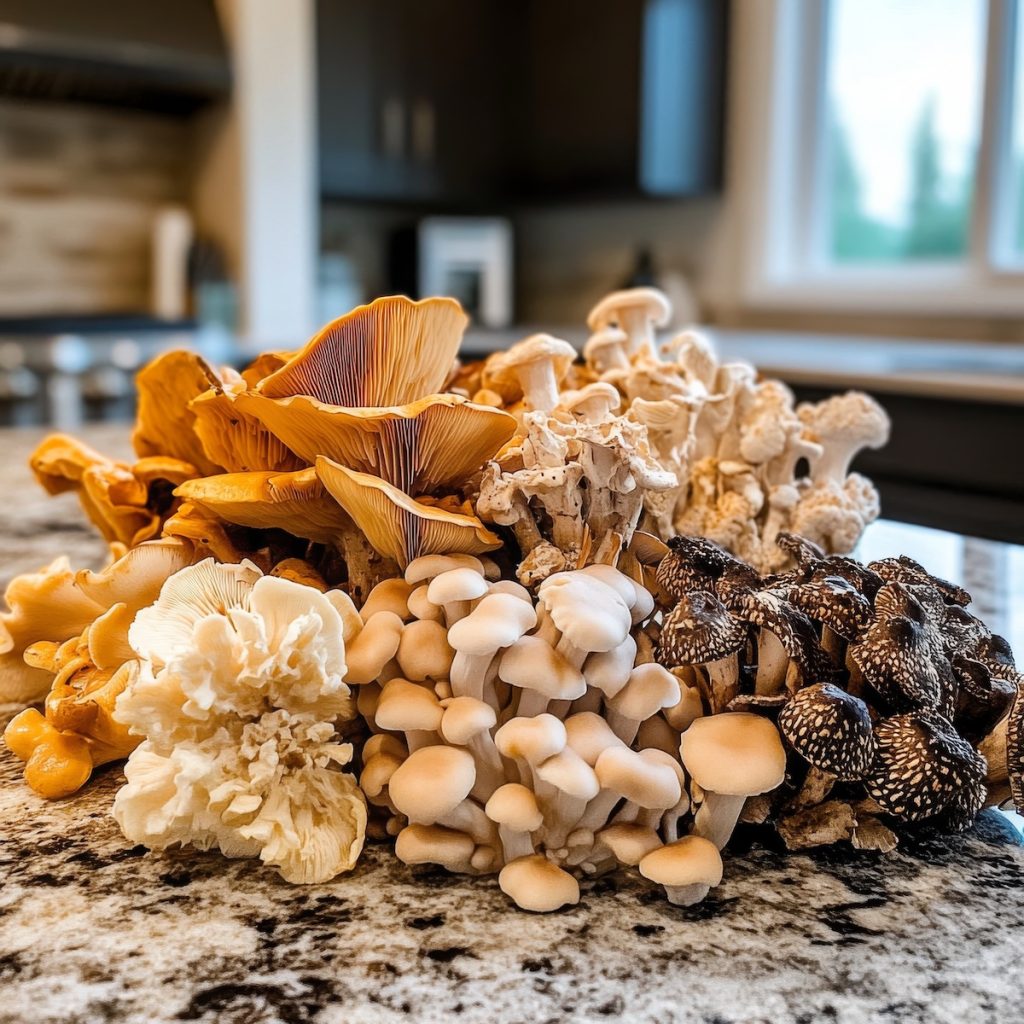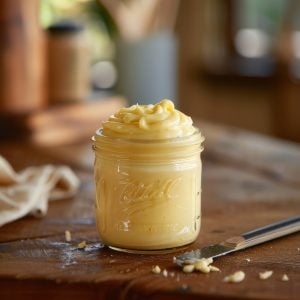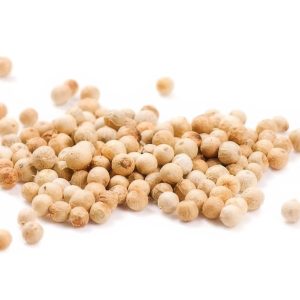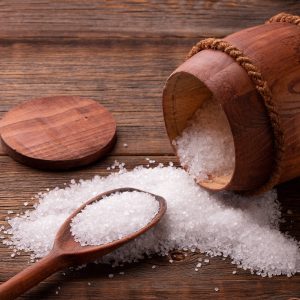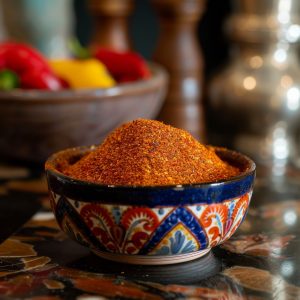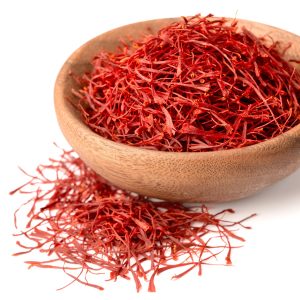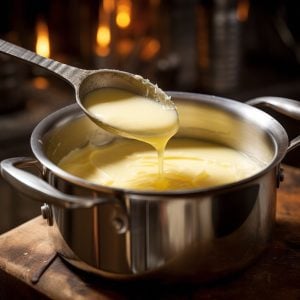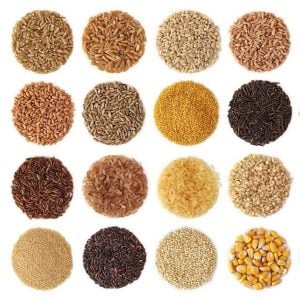Discover Wild Mushrooms and How to Cook With Them
Wild mushrooms are nature’s flavorful secret—earthy, aromatic, and packed with umami. Foraging them feels like treasure hunting in the forest, and bringing them into the kitchen unlocks a whole new world of culinary adventure.
Whether it’s the meaty bite of chanterelles, the delicate nuttiness of morels, or the bold punch of porcini, wild mushrooms add a richness to dishes that store-bought buttons just can’t match.
Cooking with wild mushrooms is about embracing bold flavors and rustic charm. Sauté them in butter, toss them into pasta, fold them into risottos, or layer them on toast—whatever the method, they elevate your dish from ordinary to unforgettable. They don’t just bring taste; they carry the wild essence of the woods, the soil, and the season.
But these fungi aren’t just delicious—they’re also nutritious, often loaded with antioxidants, vitamins, and minerals. For those willing to explore beyond the supermarket shelves (or the forest floor), wild mushrooms offer a direct connection to nature’s pantry.
In this post, I’ll show you why wild mushrooms deserve a starring role in your kitchen, how to handle them safely, and some mouthwatering ways to bring their deep, woodsy flavor into your next meal. Let’s dive into the wild.
What Are the Differences Between Wild and Domestic Mushrooms
The difference between wild mushrooms and domestic (cultivated) mushrooms lies in their origin, variety, flavor, and availability:
Origin
- Wild mushrooms grow naturally in forests, meadows, and other outdoor environments. They are foraged, not farmed.
- Domestic mushrooms are cultivated commercially in controlled environments, such as mushroom farms.
Variety
- Wild mushrooms come in a wide range of species, including chanterelles, morels, porcini, and chicken of the woods—many of which are difficult or impossible to cultivate.
- Domestic mushrooms typically include common varieties like white buttons, cremini, and portobellos—all different stages of the same species (Agaricus bisporus).
Flavor and Texture
- Wild mushrooms often have more complex, earthy, and distinctive flavors. Their textures can range from meaty to delicate.
- Domestic mushrooms are milder in taste and have a more uniform texture, which makes them versatile and predictable for everyday cooking.
4. Availability and Safety
- Wild mushrooms are seasonal and region-specific, often more expensive and harder to find. Foraging them requires knowledge, as some wild varieties are toxic.
- Domestic mushrooms are available year-round, inexpensive, and safe to eat without concern for misidentification.
In short, wild mushrooms offer bold flavor and variety, while domestic mushrooms provide convenience and consistency.
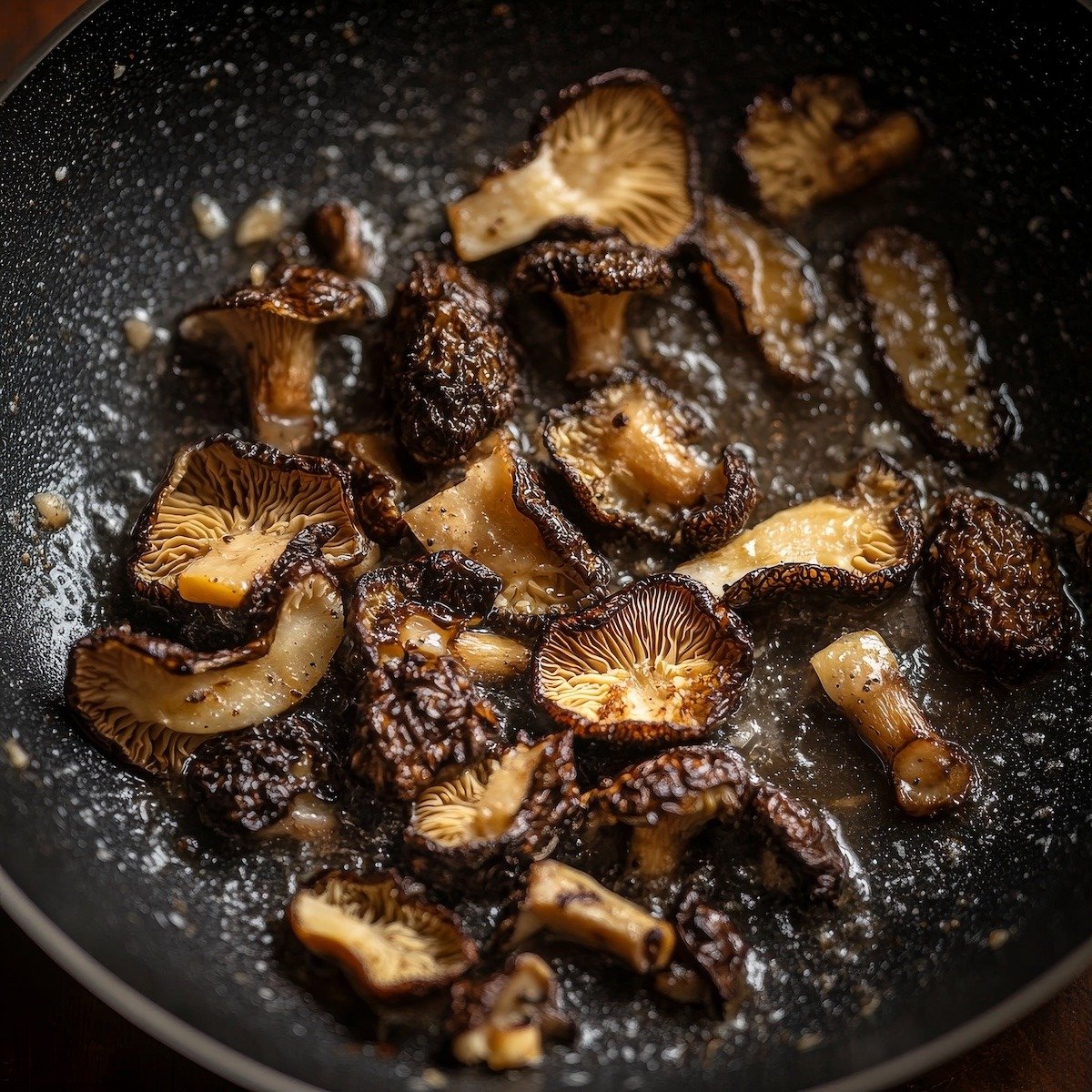
15 Popular Wild Mushrooms
- Chanterelle (Cantharellus cibarius) – Fruity aroma, peppery taste, excellent in creamy dishes.
- Morel (Morchella spp.) – Honeycomb cap, earthy and nutty, delicious sautéed or in sauces.
- Porcini (Boletus edulis) – Also known as King Bolete; meaty and rich, great for drying.
- Hen of the Woods (Grifola frondosa) – Also called Maitake; feathery clusters, savory and umami-packed.
- Chicken of the Woods (Laetiporus spp.) – Bright orange, meaty texture, tastes like chicken.
- Lobster Mushroom (Hypomyces lactifluorum) – Bright red-orange, seafood-like flavor.
- Black Trumpet (Craterellus cornucopioides) – Delicate, smoky, and excellent in pasta or risotto.
- Lion’s Mane (Hericium erinaceus) – White, shaggy, with a crab or lobster-like flavor.
- Cauliflower Mushroom (Sparassis spp.) – Frilly and tender, absorbs flavor well.
- Wood Blewit (Clitocybe nuda) – Purple tint, mild flavor, good in stews.
- Hedgehog Mushroom (Hydnum repandum) – Tooth-like underside, sweet and nutty.
- Shaggy Mane (Coprinus comatus) – Delicate and best eaten fresh; turns black when aging.
- Enoki (Flammulina velutipes) – Found wild and cultivated; mild and crunchy.
- Oyster Mushroom (Pleurotus ostreatus) – Often cultivated, but also grows wild on wood.
- Candy Cap (Lactarius rubidus) – Smells like maple syrup when dried; used in desserts.
Important Note: Always identify mushrooms with 100% certainty before consuming—many edible species have toxic look-alikes.
Are Supermarket Wild Mushrooms Cultivated
Most wild mushrooms sold in supermarkets are foraged in the wild, not cultivated—especially the more exotic varieties like morels, chanterelles, porcini, and matsutake.
These mushrooms are extremely difficult or impossible to farm at scale because they rely on complex relationships with trees or soil conditions that are hard to replicate in controlled environments.
However, some mushrooms once considered “wild” can now be grown commercially. For example:
- Oyster mushrooms and lion’s mane are often cultivated in indoor farms using sawdust or straw substrates.
- Enoki is almost entirely farmed today, though it can grow wild.
- Shiitake, while native to forests, is commonly cultivated on hardwood logs or blocks.
So, if you see mushrooms like morels or chanterelles in a store and the label says “wild,” they were likely foraged by professional mushroom hunters. If they’re packaged in uniform shapes and sizes, especially varieties like oysters or lion’s mane, they were probably grown domestically in controlled settings.
Always check the label—supermarkets often indicate whether the mushrooms are “wild-foraged” or “farm-grown.”
Cooking Wild Mushrooms FAQ
Do I need to cook wild mushrooms before eating them?
Yes, always. Most wild mushrooms should be cooked to enhance flavor, aid digestion, and neutralize potential toxins. Never eat them raw.
What’s the best way to clean wild mushrooms?
Use a soft brush or damp cloth to remove dirt. Avoid soaking them in water—they’re porous and will get soggy. A quick rinse is fine if they’re especially dirty, but dry them well.
Can I substitute wild mushrooms in recipes that call for button mushrooms?
Absolutely—but adjust for stronger flavor and unique textures. Wild mushrooms can elevate a basic dish into something rich and complex.
What cooking methods work best for wild mushrooms?
Sautéing, roasting, and grilling bring out their flavor. Some like morels also shine in creamy sauces or stuffed. Drying and rehydrating can intensify flavor.
Can I mix different wild mushrooms in the same dish?
Yes! Combining species can create layered, earthy flavors. Just ensure they all require similar cooking times and are verified safe to eat.
Are dried wild mushrooms as good as fresh?
Dried mushrooms (like porcini or black trumpets) are excellent. They develop deep, concentrated flavor and can be rehydrated for sauces, soups, and broths.
Do wild mushrooms pair better with certain ingredients?
Yes. They pair beautifully with butter, cream, garlic, thyme, white wine, pasta, risotto, eggs, and game meats. Their earthy tones complement rich, savory foods.
Can I freeze wild mushrooms?
Raw, no—they turn mushy. But you can sauté them first, let them cool, then freeze. This preserves their flavor and texture.
How long do cooked wild mushrooms last in the fridge?
Store them in an airtight container and use within 3–5 days for best quality and safety.
What should I do if a mushroom tastes bitter or metallic when cooking?
Stop eating it. While some wild mushrooms have natural bitterness that fades with cooking, off-flavors can indicate misidentification or spoilage.
Wild Mushroom Flavor - Aroma - Texture - Use
| Mushroom | Flavor | Aroma | Texture | Best Used In |
|---|---|---|---|---|
| Chanterelle | Peppery, fruity | Apricot-like | Firm, meaty | Sautéed, in cream sauces, with eggs or poultry |
| Morel | Earthy, nutty | Woodsy, smoky | Spongy yet meaty | Stuffed, sautéed, in sauces or soups |
| Porcini | Rich, umami | Deep, nutty | Dense, meaty | Risottos, pasta, soups, dried for stocks |
| Hen of the Woods | Savory, umami | Mild, earthy | Feathery, meaty | Roasted, stir-fried, soups |
| Chicken of the Woods | Mild, lemony, chicken-like | Fresh, citrusy | Firm, meaty | Grilled, fried, used as chicken substitute |
| Lobster Mushroom | Seafood-like, nutty | Shellfish-like | Dense, firm | Sautéed, in chowders or pasta |
| Black Trumpet | Smoky, earthy | Strong, musky | Delicate, thin | Dried, used in pasta, risotto |
| Lion’s Mane | Mild, seafood-like | Faintly sweet | Tender, stringy | Pan-fried, used as crab/lobster substitute |
| Cauliflower Mushroom | Mild, nutty | Earthy | Crunchy, noodle-like | Soups, stir-fries, sautéed |
| Wood Blewit | Mild, slightly sweet | Floral | Smooth, dense | Sautéed, in stews or omelets |
| Hedgehog Mushroom | Sweet, nutty | Mild | Firm, crunchy | Sautéed, baked, excellent in butter |
| Shaggy Mane | Delicate, slightly nutty | Mild | Fragile, soft | Quick sauté, used fresh only |
| Enoki | Mild, slightly fruity | Neutral | Crunchy, stringy | Soups, salads, stir-fries |
| Oyster Mushroom | Delicate, slightly sweet | Anise-like | Tender, velvety | Stir-fries, soups, grilled |
| Candy Cap | Sweet, maple-like | Maple syrup | Dry, brittle (when dried) | Desserts, cookies, custards (dried) |
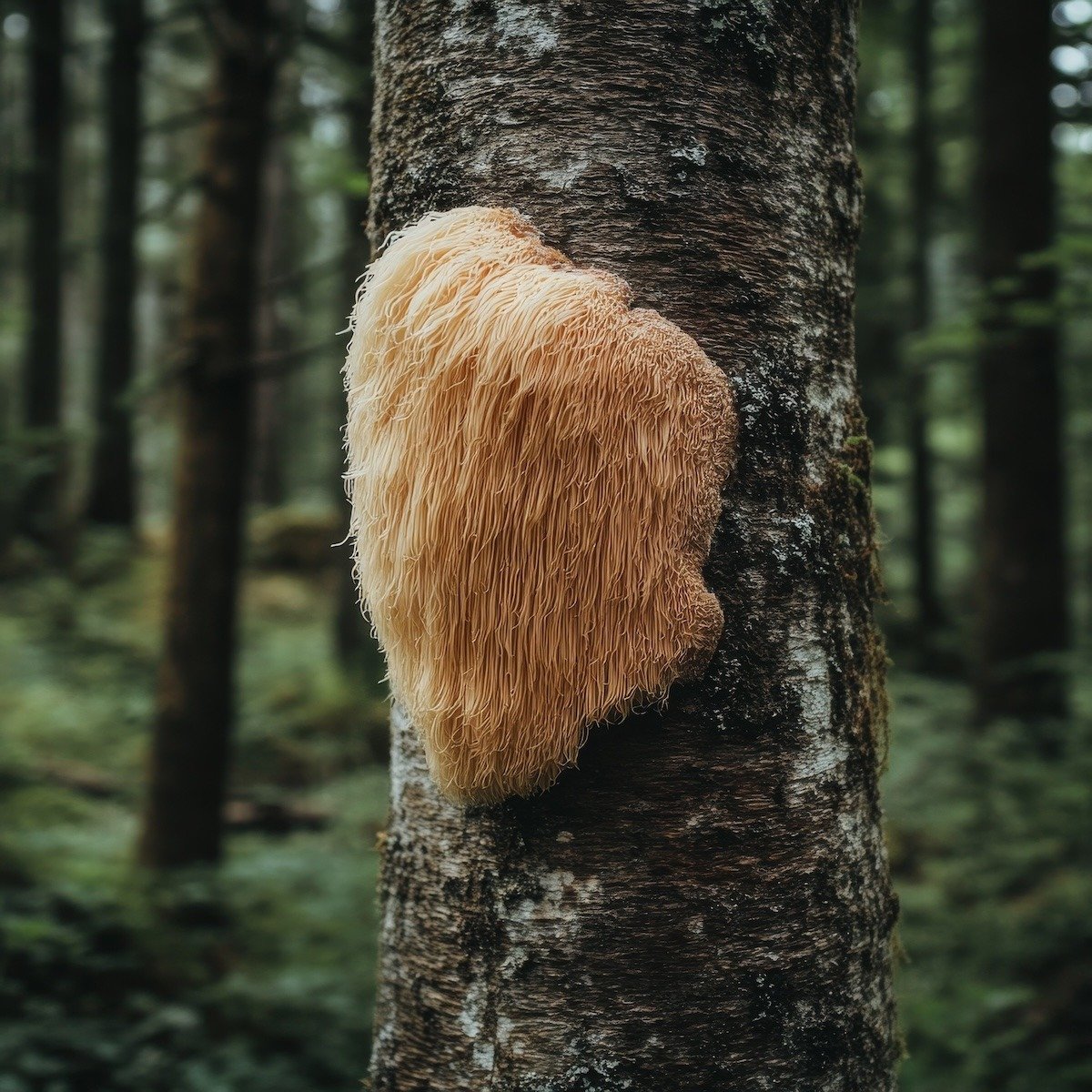
Foraging
You must be careful when foraging for wild mushrooms because misidentifying them can have serious—and sometimes deadly—consequences. Many poisonous mushrooms closely resemble edible varieties, and even experienced foragers can make mistakes.
Some toxic species cause severe digestive distress, organ failure, or neurological symptoms, and a few are fatal even in small amounts.
When you pick wild mushrooms, you take full responsibility for what ends up on your plate. That means you need to identify each mushroom with absolute certainty.
You should never rely on guesswork, old myths, or superficial traits like color or location. Instead, use reliable field guides, join local mycology groups, or consult experts before eating anything you gather.
Foraging safely also means respecting the environment. When you pull up mushrooms carelessly, you can damage their underground networks (mycelium), which affects future growth. By harvesting responsibly and verifying each find, you protect both your health and the ecosystem.
Wild mushrooms can be a delicious, rewarding part of your meals—but only if you treat them with the respect they demand.

